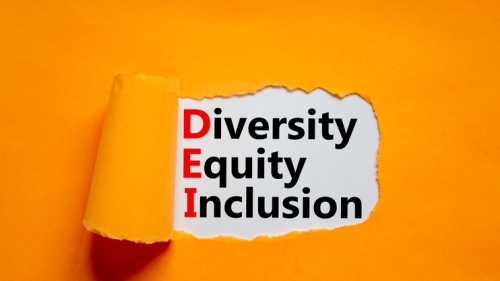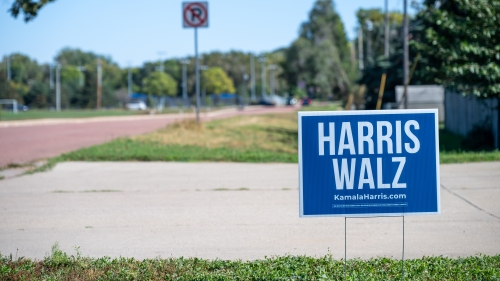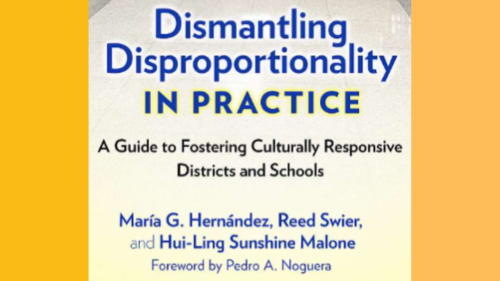María G. Hernández, Reed Swier, and Hui-Ling Sunshine Malone

The recent racist and sexist trope describing vice president Kamala Harris as a “DEI hire,” intentionally overlooking her extensive qualifications while ignoring the blatant shortcomings of her white, male counterparts, highlights just how much educators pushing for culturally responsive schools are up against.

Many right-wing politicians and pundits have anchored themselves with this attack and peppered it with microaggressive practices like intentionally mispronouncing the vice president’s name. These age-old tactics seek to invalidate and undermine the humanity of minoritized individuals in the United States.
Unfortunately, similar practices also seep into our school system and create culturally destructive environments for our students, families and staff members. This level of openly bigoted behavior is also directly connected to a larger policy agenda on the political right that continues to fight and stigmatize equity efforts happening in districts and school buildings across the country. Educators have been met with pushback and even loss of employment while attempting to to center equity through approaches like: creating more inclusive curricula, interrogating existing racial disproportionality or calling for needed anti-racist and culturally responsive teacher training.

Schools and districts need intensive support to adequately respond to our current (and historic) reality. In our new work, Dismantling Disproportionality in Practice: A guide to fostering culturally responsive districts and schools, we bring decades of experience in offering a robust, systemic approach to the critical work ahead. This text offers the foundational pieces needed to meet the pressures school educators are feeling and respond to them with clarity of purpose, coherence in messaging and detailed self to system processes that build the capacity needed to carry out transformational equity work within our schools.
We use “self to system” to refer to the simultaneous work individuals and institutions should engage in to create more culturally responsive environments. As educators develop critical self reflection around beliefs, policies and practices (BPPs) that lead to disproportionality, institutions must continuously examine how these BPPs live in the current system of schooling that is being upheld. This active and ongoing work makes space for more culturally responsive learning environments for students and adults.
Building racial stamina and investing in critical consciousness raising, for teachers and students, requires us to “set the table” for success. Or rather, develop institutional processes that foster spaces of dialogue, growth and community building across differences. In the first chapter of Dismantling Disproportionality in Practice we offer tangible, culturally responsive practices teachers and school leaders can use to increase critical self reflection and equity-centered decision making in their classrooms, staff meetings and professional development sessions. These practices include naming the elephants in the room where practitioners are pushed to think about the communities most negatively impacted in our schools as well as learning how to move with the inevitable tensions (Pollock et al., 2010) that arise when doing equity work. These setting the table processes allow schools to more effectively interrogate the beliefs, policies and practices that impact both disproportionality and ultimately, the ability to create more culturally responsive environments.
Chapter two, offers key foundational framing around culturally relevant teaching, as developed by Gloria Ladson-Billings and further explored by many other critically important educators. From seminal theory we move to active practices for school-based educators to engage, all with the knowledge that the ongoing reflective work is imperative to effectively interrogate and ameliorate current educational disparities. We outline learning processes for developing the shared language needed in equity work, for growing a deeper understanding of personal identity intersections and their impact as well as steps to grow and create space for necessary dialogue that centers the impact of race and racism.
Within the book, readers will find: 1) the “Setting the Table” processes that build reflection and lead to action as outlined above, 2) an in-depth look and guide to a root cause analysis and finally, 3) a whole chapter on developing youth voice and leadership to center the voices and experiences of those that are impacted the most! We will offer three webinars corresponding with these three focus areas. Please see the schedule below and come learn with us!
Join us for an upcoming series of free, virtual conversations related to Teachers College Press' Dismantling Disproportionality in Practice: A Guide to Fostering Culturally Responsive Districts and Schools.

October 30th, 2024 @ 5:30pm: Authentic CRSE: Tackling Beliefs through Self to System Reflection and Action. | Why is having a self to system reflection practice critical to addressing disproportionality? This webinar centers the mindsets and practices needed to support education practitioners to engage both theory and practice, in the effort to enact positive change within schooling systems.

- December 5th, 2024 @ 6pm: Understanding the Root Cause Analysis Process. | How can teams in districts and schools leverage a root cause analysis to take action on their disproportionality? This webinar is an application webinar that offers the essential components to conduct a root cause analysis including the processes, and application tools districts can take to effectively address their disproportionality. We explain each phase of the process to help you more deeply understand the why and how of the work, including centering CR-SE and the work of critical self-reflection that leads to action.

January 22nd, 2025 @ 4pm: Leveraging Student Voice in Addressing Disproportionality | One key principle within culturally responsive and sustaining education, is the centering of youth voice. Today’s students are well aware of disparities within schooling and deserve the platform to discuss and address them collectively. This webinar provides a framework, process, and tools on how districts and schools can build student voice to address disproportionality.
References
Pollock, M., Deckman, S., Mira, M., & Shalaby, C. (2010). “But What Can I Do?”: Three Necessary Tensions in Teaching Teachers About Race. Journal of Teacher Education, 61 (3), 211–224.
Hui-Ling Sunshine Malone, PhD, is a professor, researcher, consultant and scholar-activist invested in educational equity.



